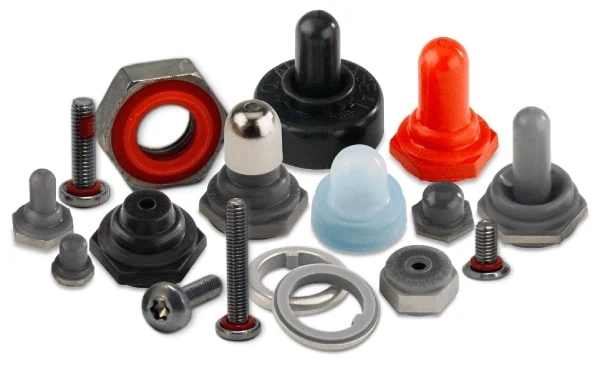How to Select the Right Elastomer
An elastomer is a material that returns to its original shape after bending and stretching, which makes it especially useful for sealing seams to prevent gases, liquids, and more from getting in or out. There are more than 20 types of elastomers, each with specific properties for effective sealing in a range of applications, including marine, outdoor, medical, aerospace, lighting, agriculture, food and beverage, and more.
What Is an Elastomer?
Elastomers are polymers with the unique ability to return to their original shape, but that’s not the only reason they’re prized as a sealing material. Depending upon your application, you can choose an elastomer that exhibits exceptional heat resistance, flexibility even in low temperatures, hardness, and elongation at the breaking point (or how much tensile strength the elastomer can resist). They are also tear- and abrasion-resistant and they make good electrical insulators.
Elastomers are commonly used in a variety of applications:
- Automotive: Certain elastomers can resist high temperatures to prevent melting, which makes them useful in high-heat environments like automobiles. Polybutadiene, for example, is often used in tires to prevent wear.
- Construction: In buildings, elastomers are used for window sealing, roof membranes, weather-stripping and waterproofing, and more.
- Wire and Cable: Because elastomers are good insulators and provide high heat resistance, they’re common in the wire and cable industry. Neoprene is a popular choice for these applications.
- Consumer and Industrial Products: Everything from appliances and industrial tools to shoes and sporting goods relies on elastomers to create effective seals against water, dirt, harmful contaminants, and more.
- Medical: From medical equipment to devices like prosthetics, elastomers are used to prevent harmful contamination from dirt and chemicals while resisting heat, chemical abrasion, liquids, and more.
Types of Elastomers
There are two primary types of elastomers:
- Saturated Elastomers: These include silicone rubber, polyacrylic rubber, and ethylene-vinyl acetate. They are exceptionally resistant to ozone, radiation, heat, and oxygen and cannot be cured via the sulfur vulcanization process.
- Unsaturated Elastomers: These include nitrile rubber, butyl rubber, chloroprene rubber, polybutadiene, natural polyisoprene, and other elastomers with carbon-carbon double or triple bonds. They can be cured with sulfur or non-sulfur vulcanization.
Even within these categories, different types of elastomers have specific benefits that make them well-suited to specific applications. You have to consider the elastomer’s unique properties and the operating conditions it will face in your application.
Elastomer Selection Considerations
Choosing the right elastomer will have an impact on the lifespan of the elastomer (as well as the associated component and even the machine as a whole), as well as how effectively it’s able to create a trustworthy seal in the given environment. There are many factors to consider when selecting an elastomer material:
- Extreme temperatures and weather conditions
- Moisture levels
- Object interference
- Exposure to oils and corrosive chemicals
- Human and environmental contaminants
- Industry requirements (ASTM, MIL-SPEC, etc.)
- Budget (with consideration for immediate costs as well as the cost of failure and elastomer replacement)
High-Quality Elastomer Sealing Solutions From APM Hexseal
Since 1947, APM Hexseal has been providing reliable sealing solutions for critical applications around the world. With more than 100 patents, we’re known for innovative solutions that are proudly manufactured in the United States, and over the years we’ve produced more than 50 million APM Hexseal boots for more than 200,000 customers with applications like military and combat equipment, off-road vehicles, medical devices, boats, beverage dispensing equipment, and so much more.
To better answer the question “What are elastomers?” and understand how to choose the right one for your application, download our eBook, Elastomer, Shlastomer, Right? You’re welcome to contact us anytime with your questions, or request a quote for your elastomer project today.


